The 9 best facial sunscreens that you'll actually want to incorporate into your daily skincare routine
Our beauty editors review the best facial sunscreens that boast skincare benefits and comfortable wearability
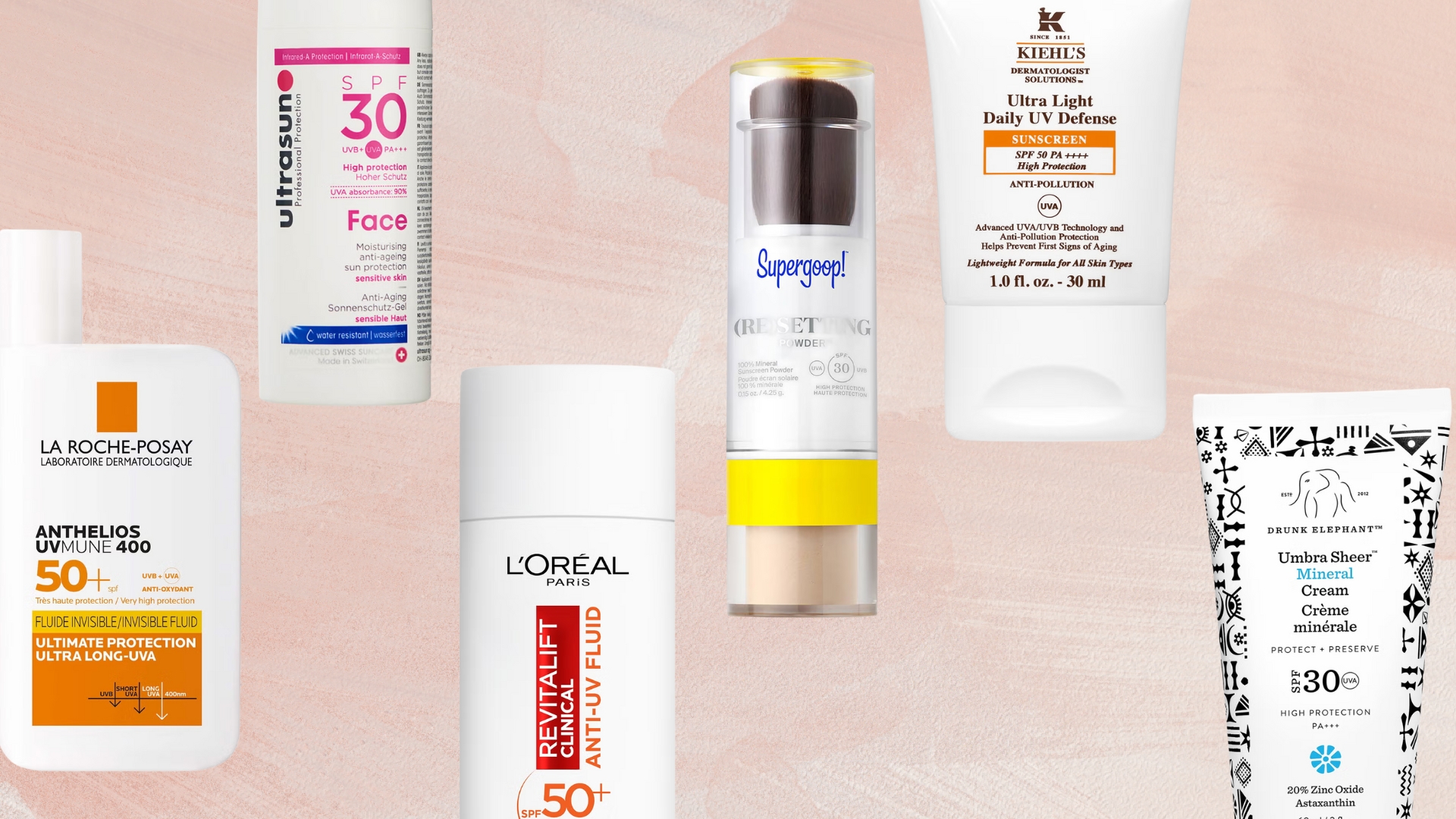

Sennen Prickett
You've heard it time and time again, any expert will agree that sunscreen is one of the most important steps within your daily skincare routine, to help prevent sun damage, pigmentation and signs of premature ageing.
While many of us freely whip out a sunscreen on our holidays and during sunny weather, from the best sunscreens for oily skin to the best foundations with SPF, it's actually key to wear SPF every day as they can cause damage on even the greyest of days. "You should be wearing sunscreen every day – no matter what the weather, or the season," agrees Dr Malvina Cunningham, Skin + Me Consultant Dermatologist. "If you were wearing SPF30 or lower during the winter months, now is the time to consider jumping up to SPF50 or more."
That said, finding the best facial sunscreen that works for you and your skin's needs can be a challenge, whether that be not leaving behind a white cast, preventing your makeup from pilling or one of the best sunscreen for sensitive skin. So, we've joined forces to test dozens on sunscreens on the market in order to find the nine very best facial sunscreens - to suit every skin type and budget.
The best facial sunscreens, tried and tested by beauty editors

RRP: £19.99 | Sunscreen Type: Chemical | Texture: Light fluid | Key Ingredients: Hyaluronic acid, vitamins C and E | Fragranced? Yes | SPF: 50+
This milky fluid disappears into the skin with zero residue, greasiness or chalky finish. It's closer to a face moisturiser with SPF than most sunscreens, meaning it sits beautifully under makeup and offers seriously robust protection. It's not oily, so a great choice for combination skin but also contains hydrating hyaluronic acid to gently plump the skin, so dry types will get on well with it too. While the fluid itself is fragranced, said scent is so subtle and unobtrusive it really shouldn't be a problem for anyone.
Pros
- High SPF
- Super lightweight
- Antioxidants protect against pollution
- Doesn't pill under makeup
- Great value
Cons
- Contains light fragrance, which won't suit everyone
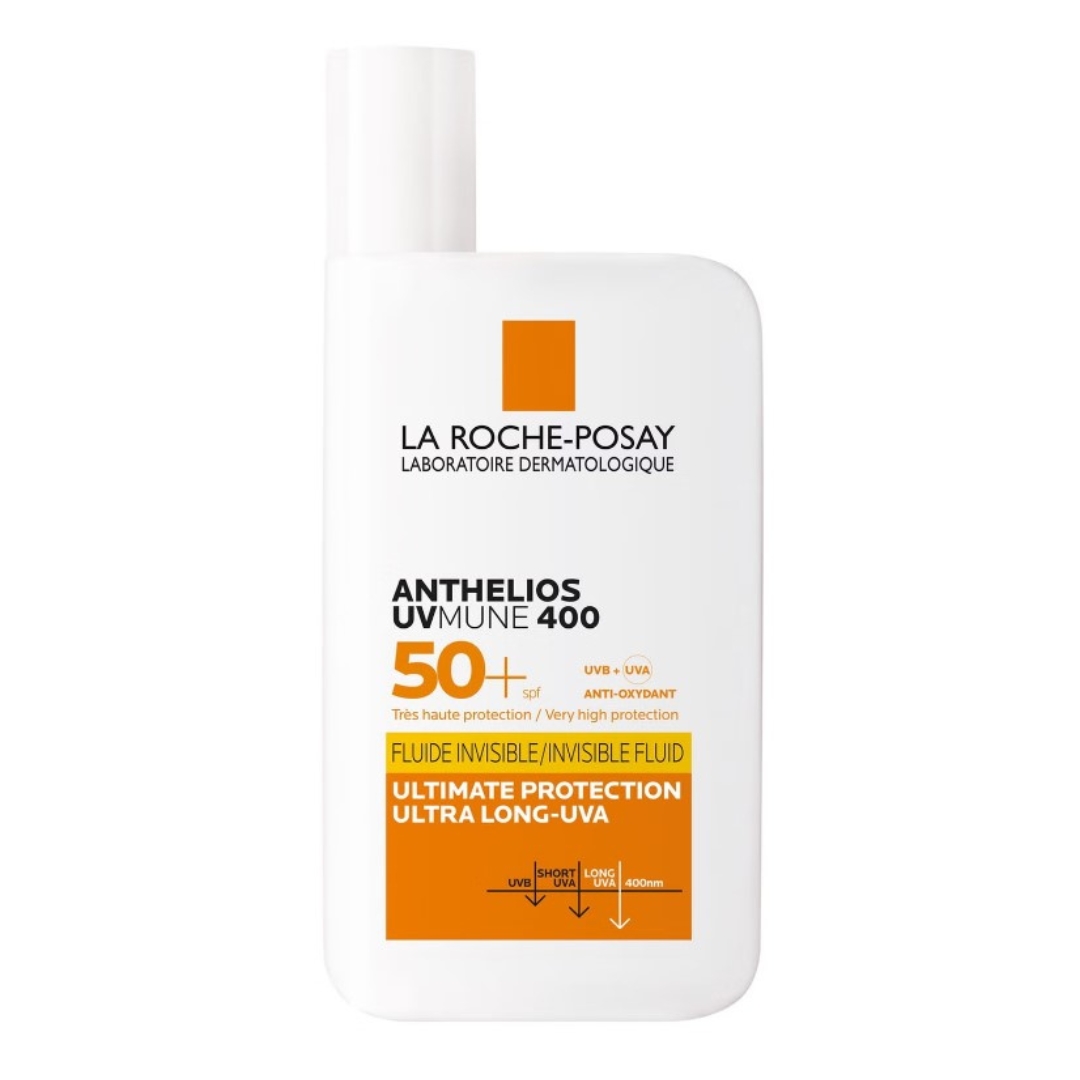
RRP: £20 | Sunscreen Type: Chemical | Texture: Fluid | Key Ingredients: Mexoryl 400 filter, glycerin | Fragranced? No | SPF: 50+
This product is an update of the much-loved Anthelios Invisible Fluid, one of the best La Roche-Posay products of all time. It has retained the light, and non-greasy texture and sheer finish of the original but added in a unique and powerful UV filter, called Mexoryl 400. This 10-years-in-the-making ingredient targets long UVA rays, which have been shown to cause the most skin damage due to their ability to reach the deep dermis layer. This, in turn, protects your collagen-producing fibroblast cells like no other formula, which translates to plumper, more even-toned, firmer skin. Top marks all around.
Pros
- Unique filter to protect against long UVA
- Great for sensitive skin
- Non-comedogenic, unscented
- Sheer finish
- Handy bottle
Cons
- None, we love this
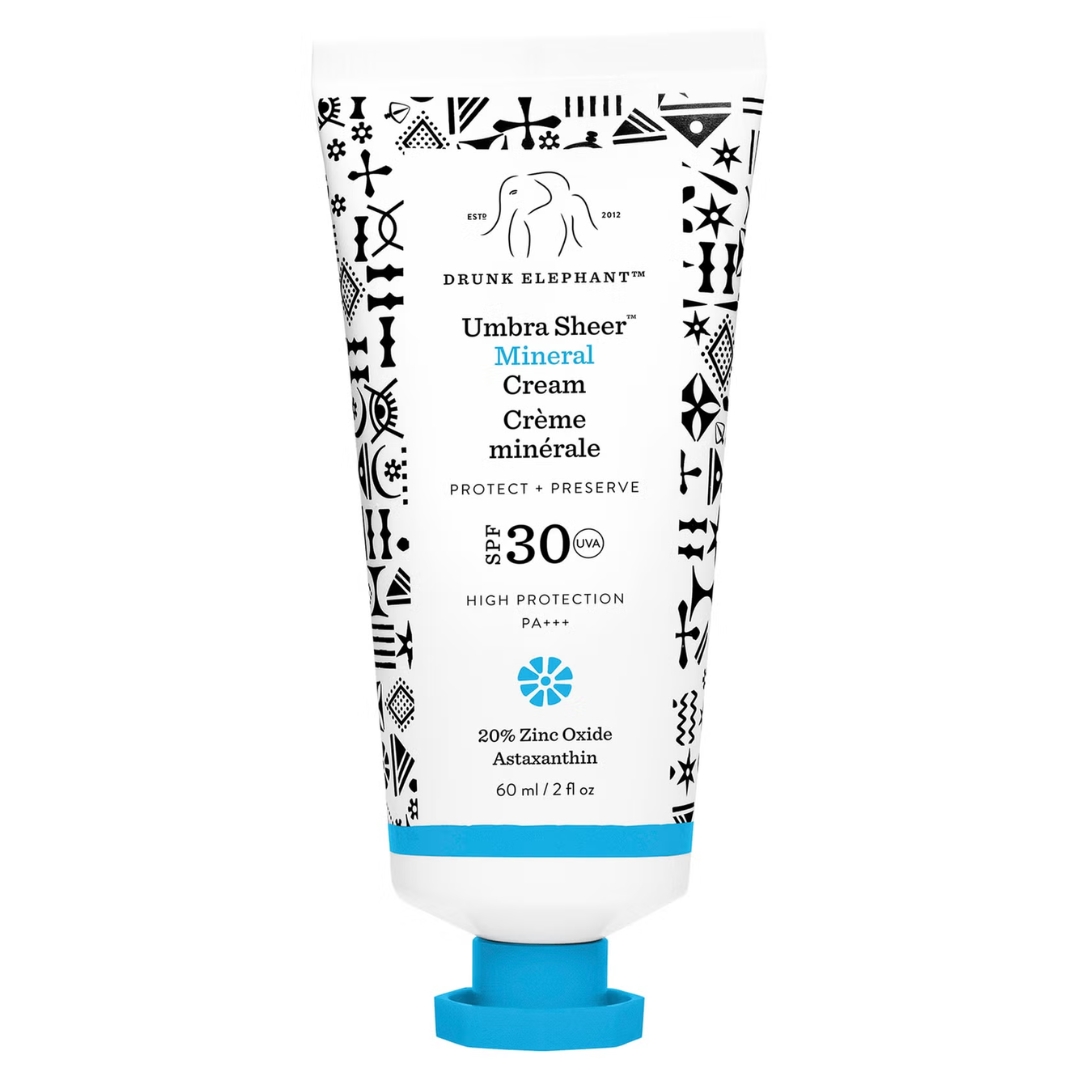
RRP: £34 | Sunscreen Type: Mineral | Texture: Cream | Key Ingredients: Sunflower shoot extract, algae extract, raspberry seed oil | Fragranced? No | SPF: 30
As the name suggests, it's made with physical blockers, yet as mineral formulas go is fairly sheer. The rich, creamy texture goes on smoothly and sinks in nicely, although we did find it needed a little more blending than your average sunscreen to look truly invisible. The creamy texture quenches skin to plump fine lines and wrinkles while defending against damage and external environmental aggressors. As this SPF is also fragrance-free, it's one of the best facial sunscreen options for sensitive skin types and anyone who prefers to avoid chemical filters. Its generous 90ml tube makes it decent value too.
Pros
- Broad-spectrum UVA/ UVB protection
- Safe for sensitive skin
- Fragrance- and essential oil-free
- Cruelty-free
Cons
- Mineral SPF can leave residue
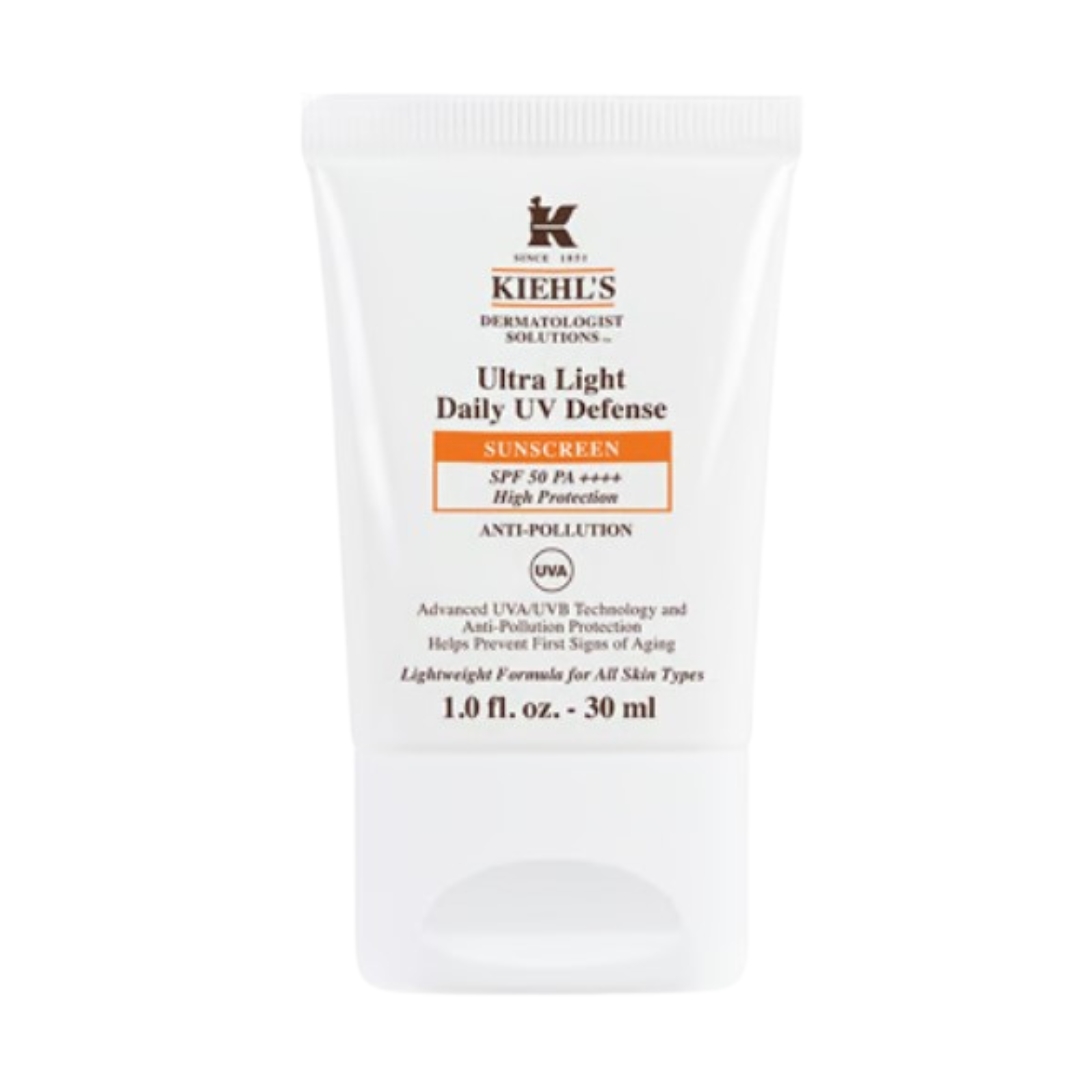
RRP: £44.50 | Sunscreen Type: Chemical | Texture: Light cream | Key Ingredients: Vitamin E, sunscreen actives | Fragranced? No | SPF: 50
This Kiehl's sunscreen is lightweight, fast-absorbing and boasts SPF 50+ for true protection. Most importantly delivering a pore-blurring soft-focus effect rather than an ultra-powdery matte one. For oilier or combination skin types, this will be hugely beneficial under makeup. It hosts an array of gentle and soothing ingredients, as well as your classic chemical sunscreen actives that help protect your skin from UV damage. If you have very dry skin that needs extra hydration there's probably a better formula out there for you. Otherwise, this non-comedogenic sunscreen is super comfortable for daily wear.
Pros
- High SPF
- Mattifying but not flat
- Non-comedogenic, unscented
- Sulphate-, paraben-, and phthalate-free
Cons
- Might not suit very dry skin
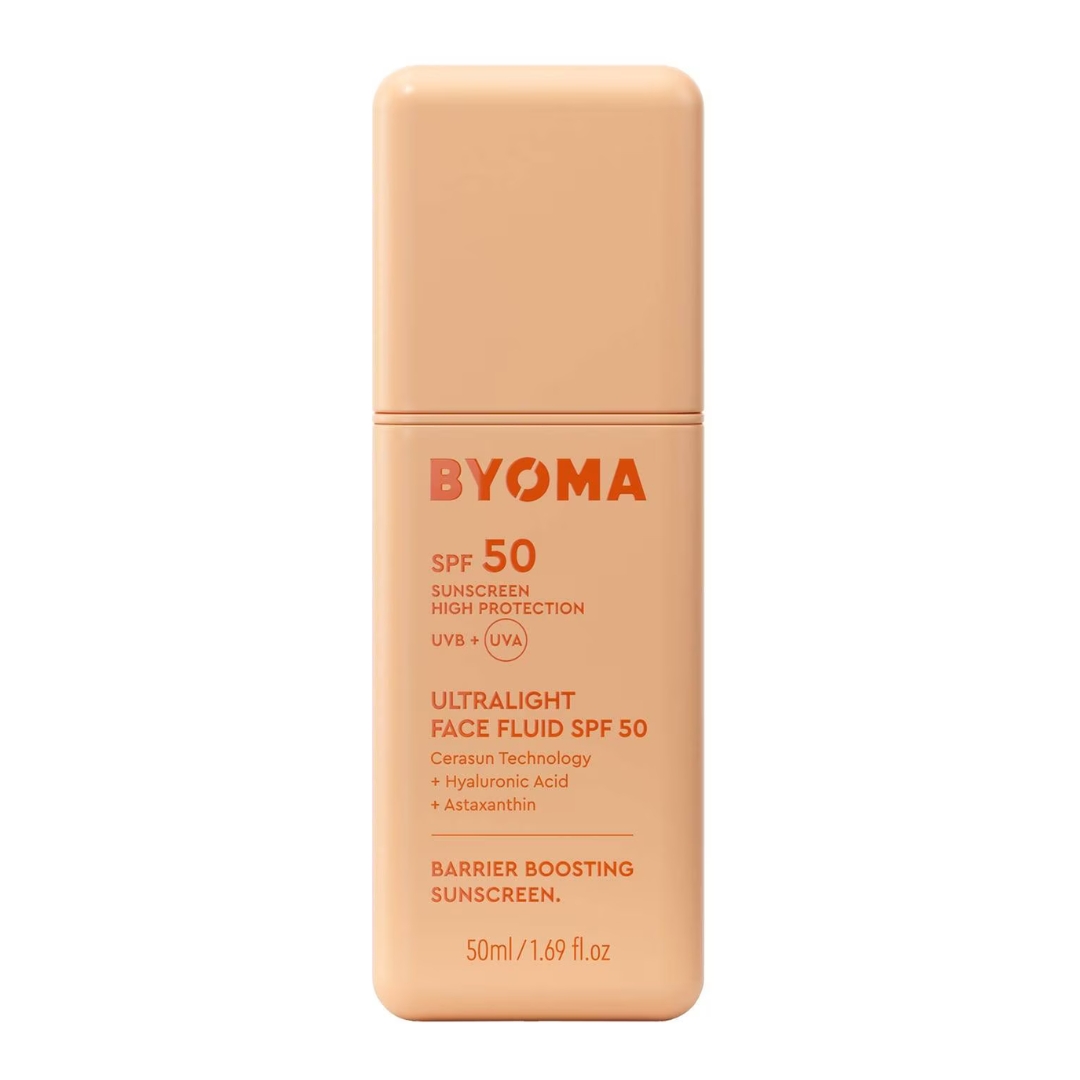
RRP: £14.99 | Sunscreen Type: Chemical | Texture: Light fluid | Key Ingredients: Hyaluronic acid, Asthaxanthin and Cera-Sun Technology | Fragranced? No | SPF: 50
This a subtly peach-tinted fluid sunscreen is designed not only to deliver SPF50, but also to hydrate and soothe the skin - whilst reducing any redness of the complexion. Our tester, Sennen Prickett hails this formula for its weightless feel on the skin, unlike the plethora of other sunscreens she's tried, she notes: "I love how this sunscreen effortlessly glides onto my skin, before quickly absorbing in for a completely weightless feel. Although it does have a slight sunscreen scent, I can easily overlook it for its ability to effortlessly layer makeup over the top - without pilling."
Pros
- Doesn't leave behind a white cast
- Hydrating and soothing on the skin
- Fast to absorb into the skin
- Doesn't pill underneath makeup
Cons
- Does have a slight sunscreen scent
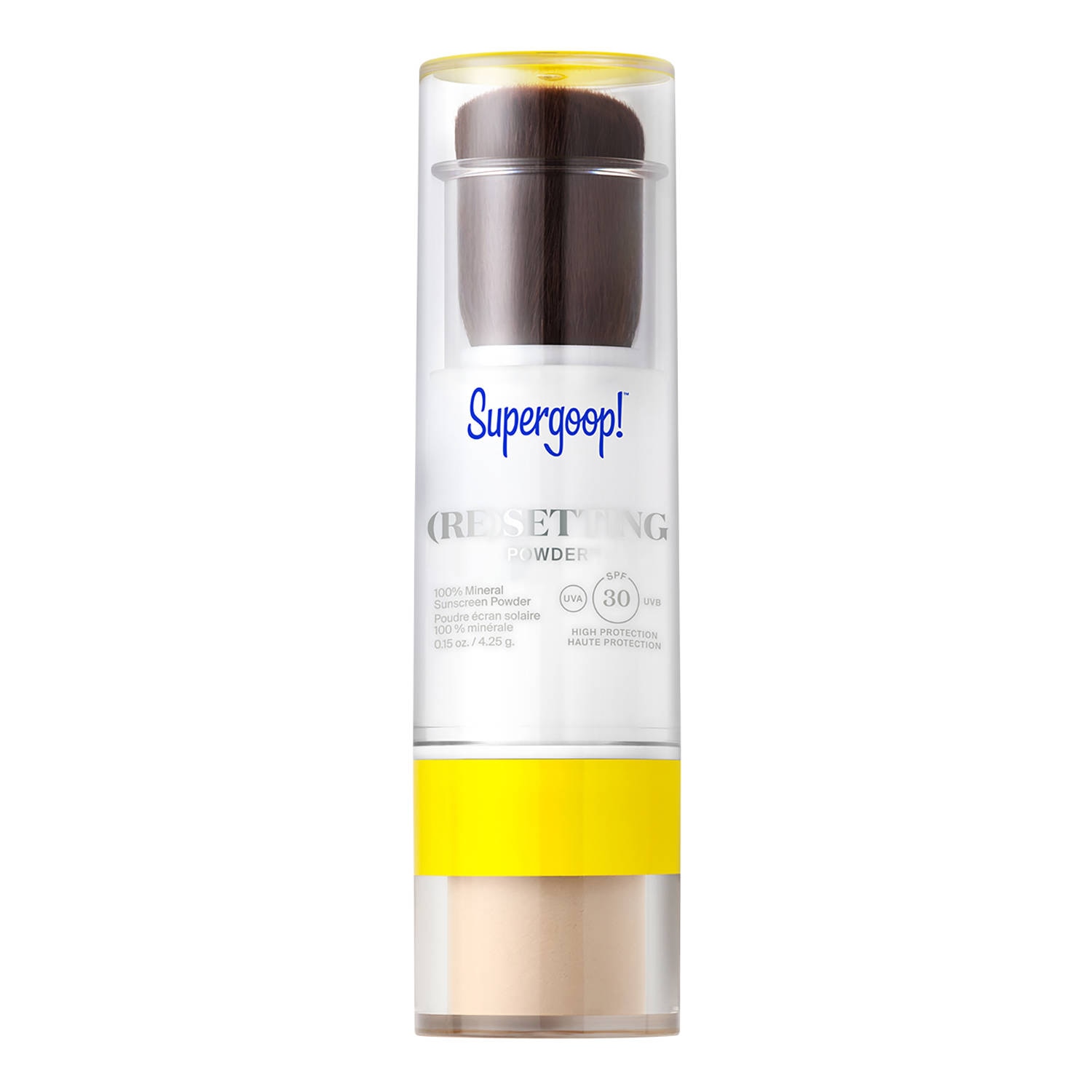
RRP: £28 | Sunscreen Type: Mineral | Texture: Translucent powder | Key Ingredients: Mineral blockers, ceramides | Fragranced? No | SPF: 30
Wondering how to reapply sunscreen without ruining your makeup? This clever buy combines a loose, translucent SPF with a little pop-out brush that the powder filters through that makes it easy for on-the-go top-ups. It's mineral formula is one of the best sunscreens for acne-prone skin and oily or combination skin types. Its weightless barely-there finish is virtually undetectable, gently mattifying without looking chalky. There's very little to nitpick about this, although while the universal shade is sheer and forgiving, it might be nice to see another one with warmer undertones.
Pros
- Handy portable applicator
- Sensitive skin friendly
- Great for oily skins
- Soft-focus finish
Cons
- Powder won't suit all
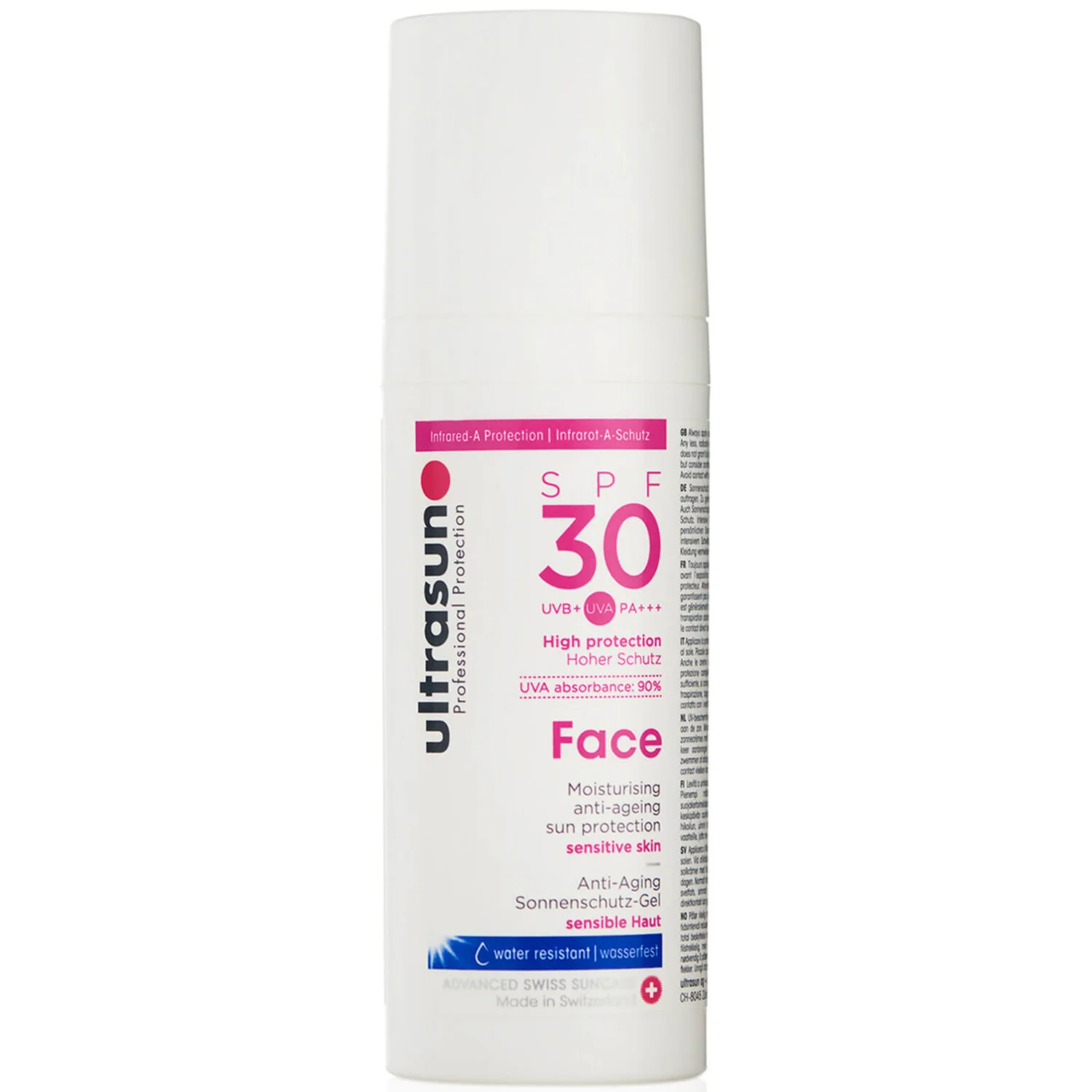
RRP: £24 | Sunscreen Type: Chemical | Texture: Cream | Key Ingredients: Grape seed extract, squalane | Fragranced? No | SPF: 30
Impressively, Ultrasun formulas are designed with unique lamellar technology, which allows the ingredients to be absorbed and bind with the skin for true all-day protection that won't wash off. The only times the brand recommends you reapply is after "extensive sweating" or swimming, otherwise, you really are good to go for the day. The texture, a mid-weight cream, feels comfortable and hydrating without being greasy, and the clever pump bottle ensures you get every last drop out. It also contains nourishing squalane, and anti-inflammatory grape seed extract and is non-comedogenic and vegan-friendly.
Pros
- UVA, UVB and HEV (blue) light protection
- Hydrating and soothing ingredients
- Long-lasting lamellar technology
- Pleasant texture
Cons
- If you prefer SPF50
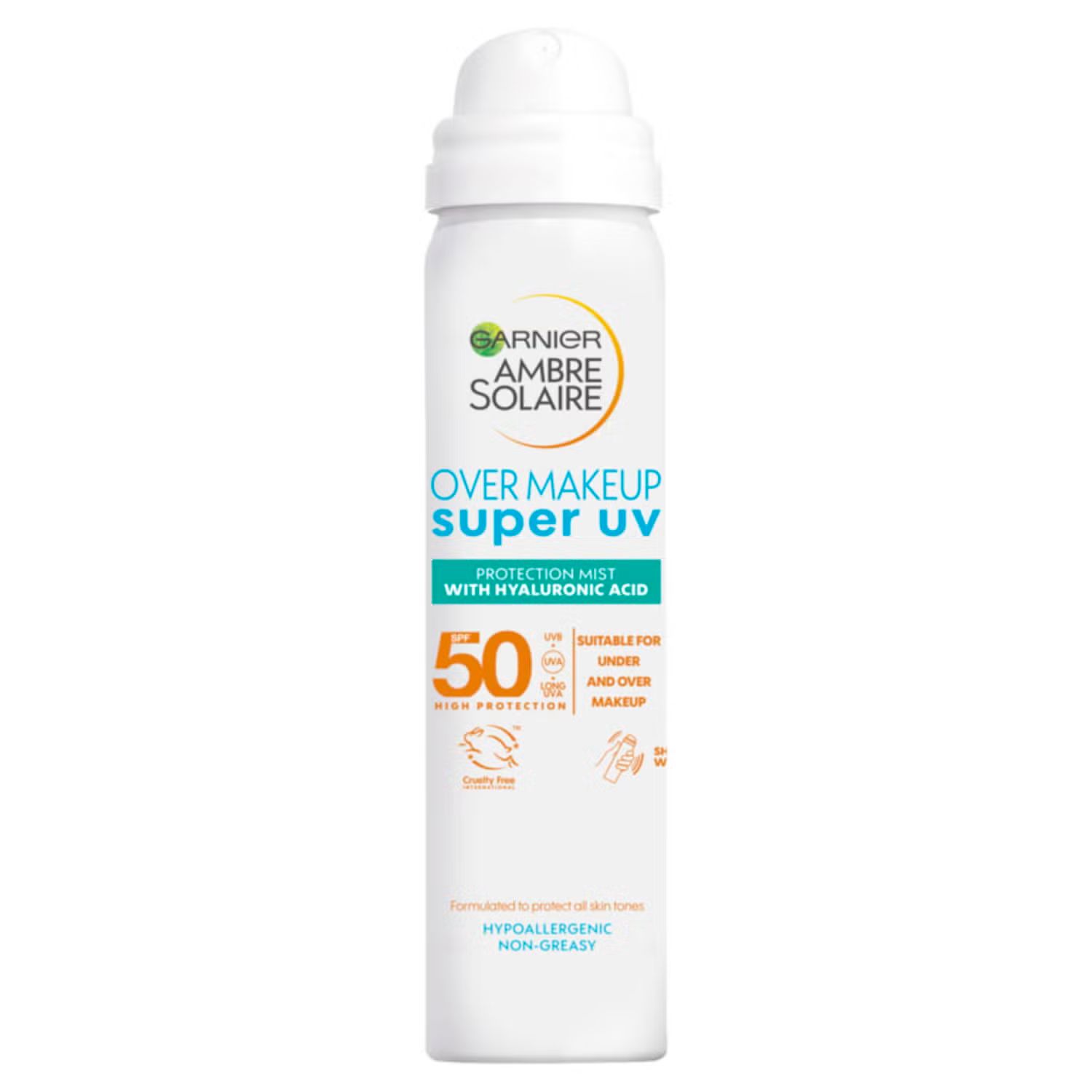
RRP: £13 | Sunscreen Type: Chemical | Texture: Transparent mist | Key Ingredients: Glycerin, antioxidants, hyaluronic acid | Fragranced? Yes | SPF: 50+
Once you've applied a full face of makeup, it's pretty unappealing to rub another cream on top of that midday and mess up your hard work. That's why we love this hydrating mist from Garnier, which offers SPF50 sun protection in a completely invisible and non-greasy spray that lands on top of makeup but doesn't disturb it or make it melt away. Naturally, with this being a mist, you will lose a little bit of product into the air with each application, so you may want to use a lotion for your morning application, then this for top-ups. Either way, a tiny bit of wastage is a small price to pay for such convenient protection.
Pros
- Easy to apply
- Broad spectrum protection
- Weightless feel
- Great for top-ups
Cons
- Mist can waste some product
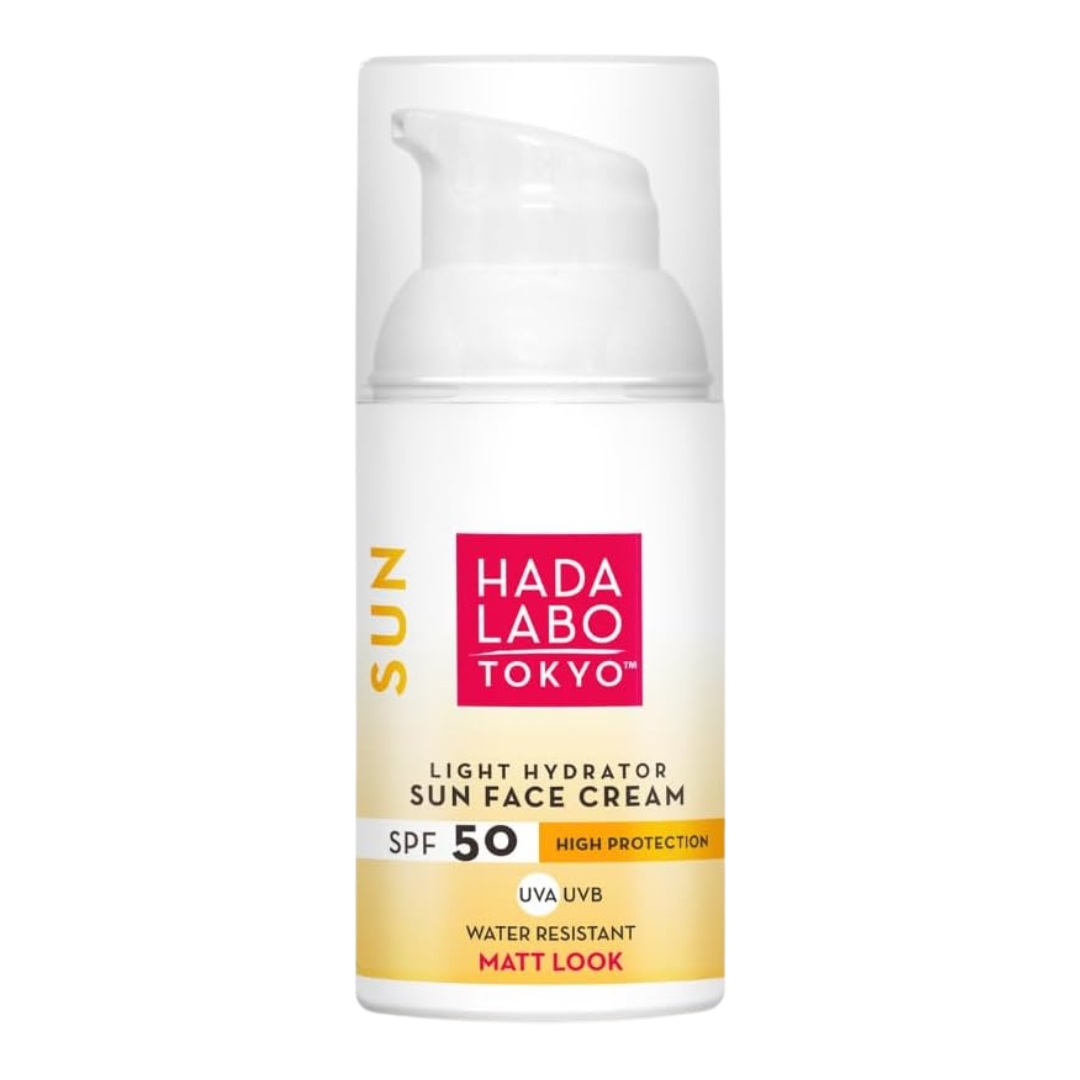
RRP: £18.99 | Texture: Light cream | Key Ingredients: Hyaluronic acid | Fragranced? No | SPF: 50
Enriched with hyaluronic acid, this sunscreen shields your skin from the harmful UV and UVB rays with its SPF50, while also deeply hydrating your complexion to allow for moisturised, comfortable wear. Sennen particularly loves this formula as it doesn't cause any irritation to her sensitive skin, she says: "This sunscreen doesn't boast any fragrance, unlike the classic sunscreen scent of others on the market, which makes it great for my sensitive complexion. It not only delivers protection but also hydrates my skin, leaving a slightly tacky, natural matte finish that works as a great base for makeup too."
Pros
- Matte finish
- Water-resistant
- Lightweight on the skin
- No sunscreen scent
Cons
- If you prefer a more radiant finish
- Can leave a slight white cast when not blended in
How we tested the best facial sunscreen
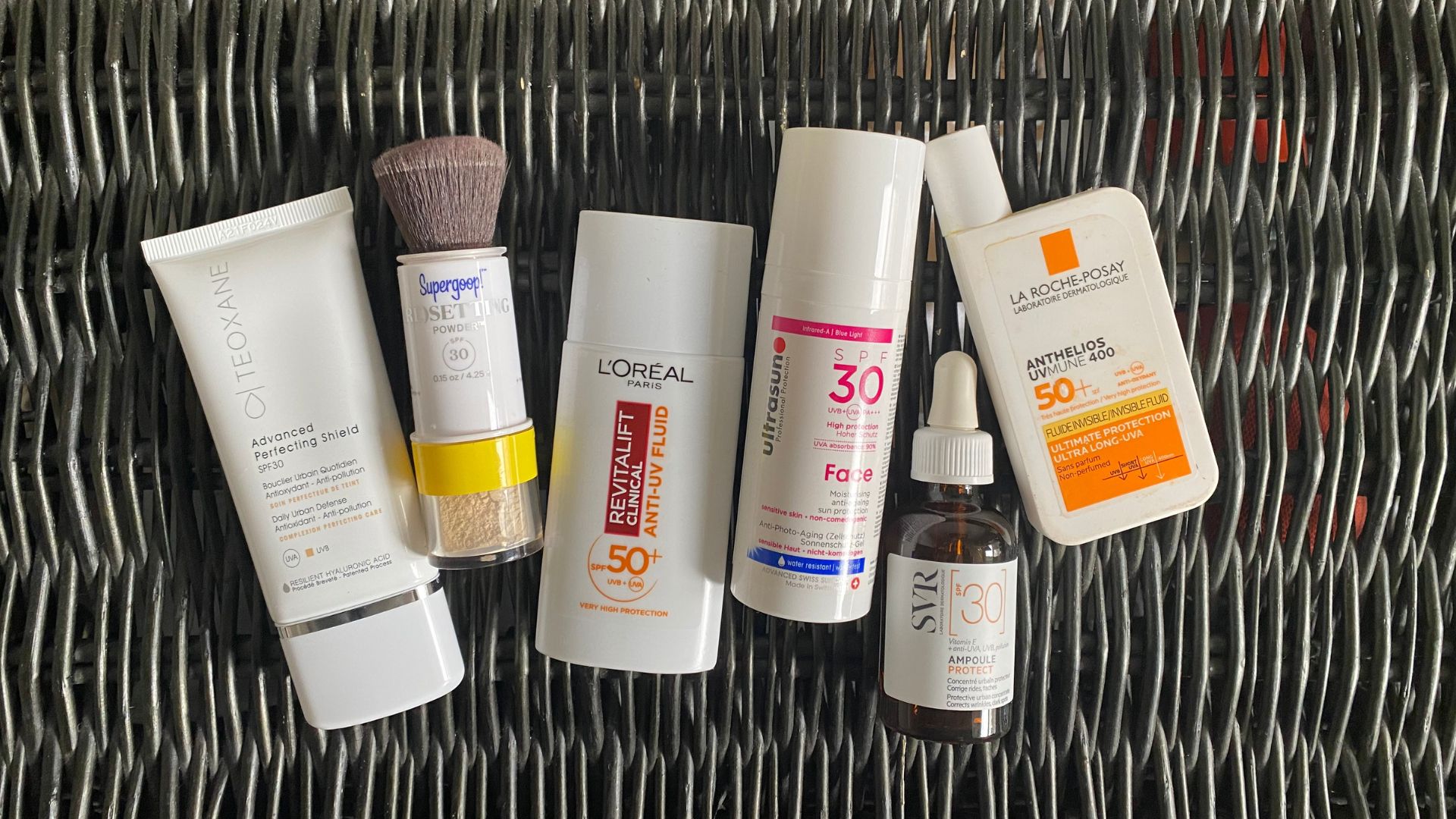
A selection of the facial sunscreens we tested for this guide
The most important thing any sunscreen can do is offer robust protection. So, it goes without saying that of the dozens of products we tested for this guide, we ensured every single one was from a reputable brand offering well-formulated, trustworthy products to defend the skin from UV damage.
We also looked for a solid ingredients list, skincare benefits, user-friendly packaging, and a texture and appearance that was genuinely comfortable to wear every day. Every product was tested for several days during various weather conditions and daily activities, in order to see which formulas came out on top.
How to choose the best facial sunscreen for you
Picking the best facial sunscreen for you starts with pinpointing your skin type, so run a quick check with says Kimberley Medd, Head of Clinic at Face The Future's tips. "Normal skin has a good balance of oil and moisture, whereas combination skin will usually have an oily T-zone with dry areas. Dry skin feels tight and flaky, which is often paired with a dull complexion. Oily skin looks shiny, and will be prone to blackheads and breakouts."
Once you have that down, you can then select the sunscreen type and texture that is best suited to your skin type. As Medd explains:
- Oily: “If you have oily skin, I would highly recommend an SPF that is oil-free to prevent further skin congestion, and to reduce shine."
- Combination: “Combination skin types need an SPF that adds moisture to dry areas of the skin, but that is also oil-free and non-comedogenic to prevent skin congestion in the T-zone."
- Dry skin: “For dry skin types, I would recommend a formula that includes moisturizing ingredients, such as Vitamin E, glycerin or ceramides." These also have the benefit of helping any natural glow stick around for longer, if you're someone who wants to know how to make a tan last longer.
- Balanced skin: “Normal skin types require an SPF that isn’t oil-rich, but that also isn’t too drying, boasting a comfortable, non-greasy formula.
Your best facial sunscreen FAQs, answered
What is the most effective sunscreens for the face?
Understanding sunscreen from an effectiveness point of view means first decoding the (often fairly jargon-heavy) labeling. The Australian Academy of Science explains clearly what SPF numbers actually signify. This is calculated by measuring the time (in seconds) it takes for skin to slightly redden when covered in sunscreen, divided by the time it takes for it to redden without protection. So, if it took 300 seconds for the skin to burn with sunscreen, and 10 seconds to burn without it—300÷10—a sunscreen would carry an SPF 30.
As for all the rest of the numbers and letters on your sunscreen label, here is your quick cheat sheet:
- UVA: The ultraviolet rays responsible for skin aging and skin cancer/melanoma (think A for aging)
- UVB: The ultraviolet rays responsible for skin reddening and burning (think B for burning)
- SPF: Refers to the Sun Protection Factor, and only determines protection from UVB rays. Dermatologists widely recommend using SPF 30 as a minimum.
- PA: The Protection Grade of UVA is measured via plus signs (+)—the more pluses, the better the protection.
- Broad-spectrum: Absorbs or blocks both UVA and UVB rays. So if you are wondering does sunscreen prevent tanning, if it's broad spectrum then yes, it will. And that's no bad thing.
- Chemical sunscreen: These widely-used formulas contain chemical compounds that absorb and neutralize UV rays within the skin.
- Mineral sunscreen: Contain natural reflectors, such as zinc oxide and titanium dioxide, that physically block the sun and reflect UV rays away from the body.
- Reef-safe: Some chemical sunscreens can be damaging to fragile aquatic life when they rinse off your skin into the water supply or ocean. According to Save the Reef, this is any sunscreen product with ingredients that “aren't on the HEL List"
Should you apply SPF before or after moisturiser?
Wondering whether to apply sunscreen or moisturiser first? This is actually a common question for many, however the rule of thumb is to make sure you're treating sunscreen as the last step within your skincare routine. This means, you should apply your SPF after moisturiser, in order to successfully create a protective layer that shields your complexion from harmful UV rays.
What sunscreen is the most environmentally friendly?
There's more to sunscreens than acronyms and packaging symbols, it's important to make sure you respect your environment too. Even the best facial sunscreen won't be able to accompany you on coastal holidays if it isn't reef safe. In order to protect their coastlines and underwater habitats, some parts of the world have committed to sunscreen bans on chemical sunscreens - and some mineral ones - that contain ingredients that aren't considered reef-safe.
At the moment, Hawaii, Key West (Florida), Palau, Rivera Maya (Mexico), Los Cabos (Mexico), Bonaire, Aruba, and the US Virgin Islands have sunscreen bans that don't allow the delivery or sale of particular products to their region. Before you travel, it's good to be aware of this.
Sign up to our free daily email for the latest royal and entertainment news, interesting opinion, expert advice on styling and beauty trends, and no-nonsense guides to the health and wellness questions you want answered.
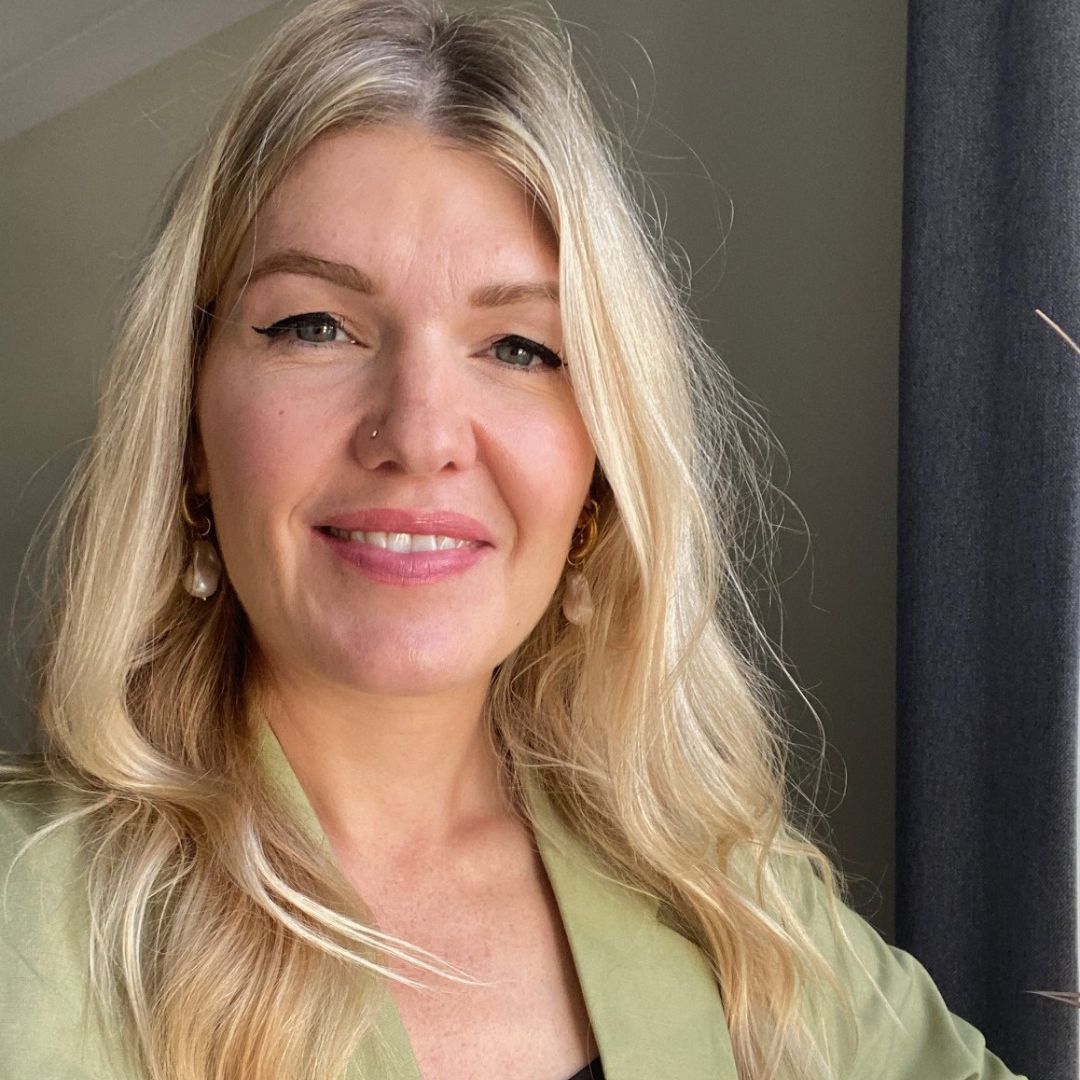
As woman&home's Beauty Channel Editor, Fiona Mckim loves to share her 15+ years of industry intel on womanandhome.com and Instagram (@fionamckim if you like hair experiments and cute shih-tzus). After interning at ELLE, Fiona joined woman&home as Assistant Beauty Editor in 2013 under industry legend Jo GB, who taught her to understand ingredients and take a cynical approach to marketing claims. She has since covered every corner of the industry, interviewing dermatologists and celebrities from Davina McCall to Dame Joan Collins, reporting backstage at London Fashion Week and judging the w&h Beauty Awards.
- Sennen PrickettDigital Beauty Writer